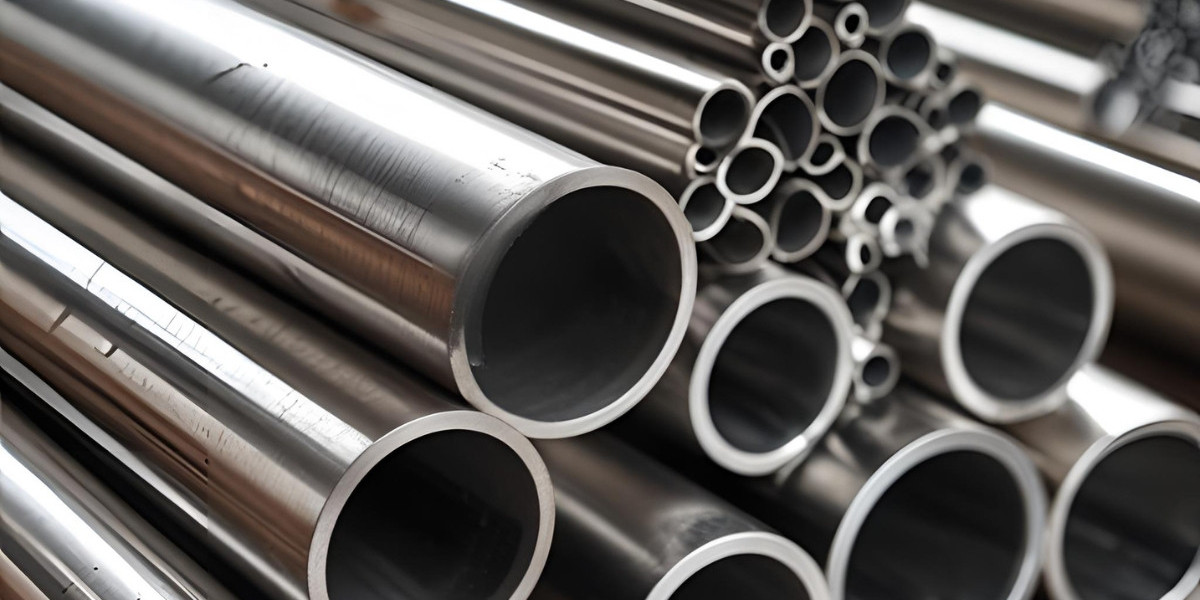Stainless steel is one of the most reliable materials in modern engineering, and among its many grades, Stainless Steel 304L Pipe stands out as a versatile and durable choice. Known for its excellent corrosion resistance, mechanical strength, and weldability, this pipe is widely used across multiple industries. From chemical processing to construction, SS 304L pipe has proven to be a long-lasting and cost-effective solution.
This blog provides a complete guide to Stainless Steel 304L Pipe, including its composition, features, applications, advantages, and why it remains the first choice for industries worldwide.
What is Stainless Steel 304L Pipe?
Stainless Steel 304L Pipe is a low-carbon variant of the 304-grade stainless steel. The “L” in 304L refers to “Low Carbon,” which enhances its resistance to sensitization during welding and makes it suitable for applications where heavy welding is involved.
This pipe is manufactured in seamless and welded forms to meet different industrial requirements. Its durability, excellent formability, and resistance to rust make it ideal for transporting fluids, gases, and other substances in demanding environments.
Chemical Composition of SS 304L Pipe
The strength and corrosion resistance of Stainless Steel 304L Pipe come from its balanced chemical composition.
Carbon (C): 0.030% max
Chromium (Cr): 18.0 – 20.0%
Nickel (Ni): 8.0 – 13.0%
Manganese (Mn): 2.0% max
Silicon (Si): 1.0% max
Phosphorus (P): 0.045% max
Sulfur (S): 0.030% max
Iron (Fe): Balance
The lower carbon content reduces carbide precipitation, making SS 304L Pipe especially suitable for high-temperature and welded applications.
Key Properties of Stainless Steel 304L Pipe
Excellent Corrosion Resistance
SS 304L pipes resist rust, oxidation, and chemical damage, making them suitable for industries dealing with corrosive environments.Low Carbon Content
The reduced carbon percentage prevents carbide precipitation during welding, ensuring long-lasting strength and durability.High Weldability
304L pipe is easily weldable without the need for post-weld annealing, making it convenient for construction and fabrication projects.Good Strength and Toughness
These pipes maintain their toughness and mechanical strength even at cryogenic and elevated temperatures.Versatile Applications
From industrial piping systems to architectural uses, SS 304L pipe adapts well to multiple requirements.
Types of Stainless Steel 304L Pipe
Stainless Steel 304L pipes are available in different forms to suit various industrial needs:
Seamless Pipe – Manufactured without welds, ensuring uniform strength and resistance to pressure. Ideal for critical applications.
Welded Pipe – Cost-effective and available in larger diameters. Suitable for low-to-medium pressure applications.
ERW Pipe (Electric Resistance Welded) – Commonly used in transportation of oil, gas, and water.
Fabricated Pipe – Made to customized dimensions for specific industrial requirements.
Applications of Stainless Steel 304L Pipe
The durability and resistance of SS 304L pipes make them widely used across industries:
Chemical Industry – Piping systems, chemical containers, and storage tanks.
Oil & Gas Industry – Transportation of crude oil, natural gas, and petroleum products.
Food & Beverage Industry – Processing equipment, pipelines, and storage tanks due to hygiene properties.
Pharmaceutical Industry – Clean piping systems for drugs and medical-grade fluids.
Water Treatment Plants – Used in desalination, filtration, and wastewater treatment.
Construction Industry – Structural applications, handrails, and architectural designs.
Automotive & Aerospace – Exhaust systems, fuel lines, and heat exchangers.
Advantages of Stainless Steel 304L Pipe
Corrosion Resistance
With chromium and nickel content, SS 304L pipes can withstand harsh conditions, making them durable in marine and industrial environments.Cost-Effectiveness
The low maintenance and long service life make 304L pipes a cost-effective solution compared to other materials.Easy Fabrication
These pipes are easy to cut, weld, and shape, allowing flexibility in engineering and construction.Hygienic Properties
Smooth surfaces prevent contamination, making them suitable for food, beverage, and pharmaceutical industries.Sustainability
Stainless steel is 100% recyclable, making 304L pipes an eco-friendly choice.
Stainless Steel 304 vs. 304L Pipe
Many industries often compare SS 304 vs. SS 304L pipes before making a choice.
Carbon Content:
304 has a higher carbon content, while 304L has a maximum of 0.03%, reducing carbide precipitation.Weldability:
304L is preferred for heavy welding applications since it does not require post-weld annealing.Strength:
SS 304 pipes have slightly higher tensile strength, but SS 304L provides better resistance during welding.Applications:
304 is commonly used in general applications, while 304L is ideal for corrosive and high-weld applications.
Industrial Standards for SS 304L Pipe
Stainless Steel 304L Pipes are manufactured as per international standards to ensure reliability and performance.
ASTM A312 / A358 – For seamless and welded stainless steel pipes
ASME SA312 / SA358 – Pressure piping standards
DIN / EN Standards – European compliance
JIS Standards – Japanese industrial requirements
These standards ensure the pipes meet global quality benchmarks.
Why Choose Stainless Steel 304L Pipe?
Industries prefer SS 304L pipe for its combination of strength, corrosion resistance, and cost-effectiveness. It works well in both high-temperature and cryogenic applications. Its hygienic properties make it safe for industries where cleanliness is crucial, while its durability ensures long-term performance.
Additionally, the material’s versatility in manufacturing seamless, welded, and fabricated forms gives industries flexibility in usage.
Maintenance Tips for Stainless Steel 304L Pipe
Although Stainless Steel 304L is low-maintenance, proper care can extend its life:
Regular cleaning with mild detergents prevents contamination.
Avoid using harsh chemicals like chlorine, which may cause pitting corrosion.
Inspect weld joints and fittings periodically to ensure no leaks.
Use protective coatings in marine or extreme environments for added safety.
Future Outlook of Stainless Steel 304L Pipe
As industries continue to seek durable, cost-effective, and eco-friendly materials, SS 304L pipe demand is expected to grow. With increasing applications in renewable energy, infrastructure projects, and healthcare systems, 304L stainless steel will remain a leading choice for decades.
Conclusion
Stainless Steel 304L Pipe has proven to be one of the most reliable and versatile materials for industries. Its low carbon content, high weldability, and resistance to corrosion make it ideal for critical applications. Whether in oil and gas, food processing, or construction, these pipes ensure long-lasting performance and safety.
By combining strength, cost-effectiveness, and sustainability, SS 304L pipe continues to play a vital role in modern infrastructure and industrial growth.












